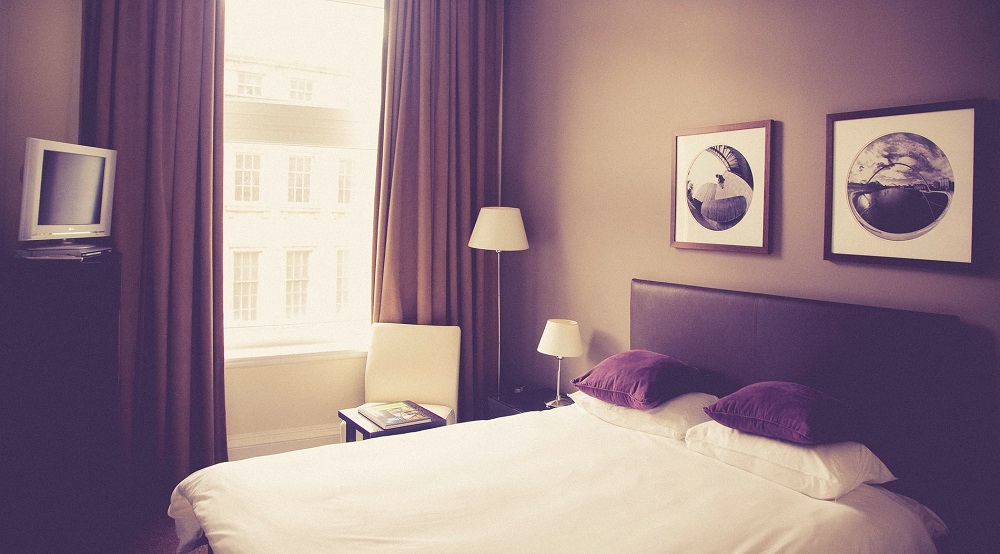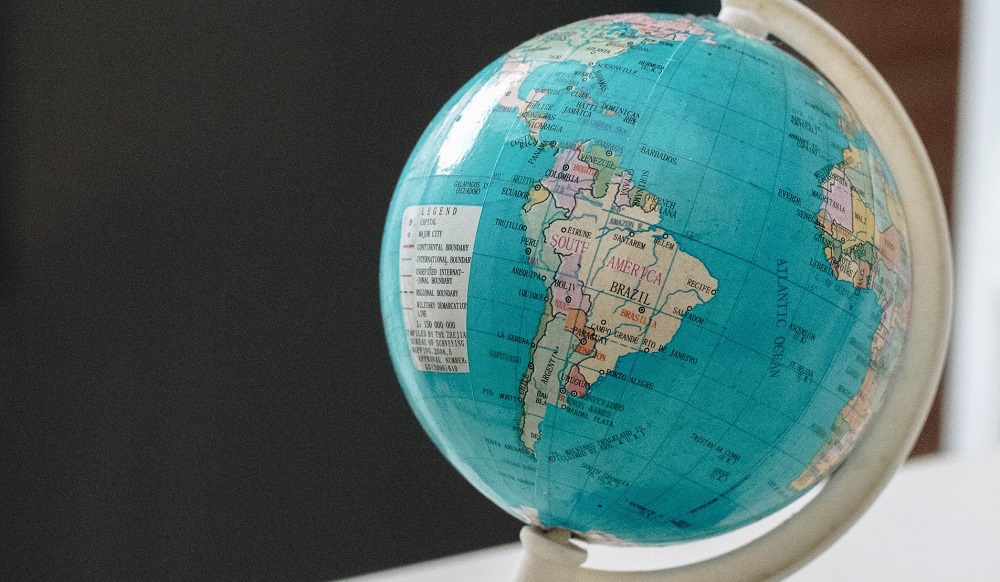In our last global P&L article, we noted that hotel profitability improved across much of the globe as the industry continued its slow recovery. In this latest update with October data, we saw similar trends in P&L data although there were notable outliers in each world region. Among the major European markets, Berlin achieved an October gross operating profit per available room (GOPPAR) of US$95.82, which was 111% of the 2019 comparable. Berlin was the only major market in Europe that was able to surpass its October 2019 GOPPAR level.
In a somewhat typical post-Thanksgiving week (28 November-4 December), U.S. hotel occupancy rose from the previous week to 54.8%. Occupancy indexed to 2019 was 91, which was good but lower than the previous three weeks. However, when compared with 2010, a year like 2021 because of calendar make up and the rebuilding after the Great Recession, occupancy was 10% higher. This week’s average daily rate (ADR) surprised on the downside, falling 0.6% week on week. But with the gain in occupancy, weekly revenue per available room (RevPAR) increased by 3% from the prior week.
As uncertainty and new cases of the Omicron variant increase across the globe, some countries have reimplemented restrictions around travel. New restrictions obviously mean potential challenges for the hotel industry, and as we have seen throughout the pandemic, every class of hotel can be affected differently. In this latest piece, we look at how Luxury class hotels have performed around the globe, especially in more recent months.
With employees continuing to return to offices, ongoing vaccination progress, and the reopening of many international borders, the time would seem to be ripe for the return of business travel. Yet, even before the news of Omicron in recent days, there continued to be negative sentiment about the return of this segment whereas pandemic-era leisure travel sentiment remains buoyant. In November 2021, STR undertook an online survey of its Traveler Panel—an engaged audience of travel consumers—to examine the fortunes of the industry at this uncertain time.
Thanksgiving week for the U.S. hotel industry was record-breaking by all measures. Weekly occupancy topped 53%, which was 2.3 percentage points higher than the holiday week in 2019 and nearly a point higher than the previous record achieved in 2018. Thanksgiving Day occupancy (56.9%) fell a bit short to 2018’s level (57.3%) as did Monday’s, but occupancy on the other days of the week were at record highs. Looking at the 3-day weekend (Thursday to Saturday), occupancy reached 60.2%, 0.9 percentage points greater than in 2018 and 2017 which had been the bar to surpass.
As COVID-19 cases rise in many parts of the world, especially Europe, the travel industry may be set for another period of disruption as winter encroaches and traveler sentiment worsens. Uncertainty in recent days has mounted further as the new Omicron variant has spread quickly, leading to many countries reimposing COVID restrictions. The situation is particularly ambiguous as recent months had produced stronger levels of hotel performance with vaccination progress leading to buoyed demand, reduced restrictions and the reopening of many international borders.
STR’s latest 51-chart map shows a variety of recent national/regional trends as well as the general pace of the industry’s continued recovery. For the four weeks ending with 13 November 2021, more states closed the gap or exceeded their 2019 levels in revenue per available room (RevPAR) on a total-room-inventory (TRI) basis. Keystone markets, however, remain persistent holdouts toward further national recovery. Higher-than-expected average daily rate (ADR) along with strong weekend demand continue to underpin recovery.
The U.S. hotel industry saw its largest week-over-week demand gain since early October with 704,000 more room nights sold for the week ending 13 November 2021. Weekly demand has increased in 21 of the past 33 weeks and the most recent week’s gain was the 10th largest in that span. With the increase, occupancy advanced to 61.6%, up 1.9 percentage points from the previous week. Compared with 2019, occupancy indexed at 96, which was the highest level since early July. Average daily rate (ADR) also improved, up 1.3% week on week, to a level that was three percent higher than what it was in 2019.
The hotel industry rebounded slightly after two weeks of declines, gaining nearly a percentage point in occupancy during the week ending 6 November. The uptick was expected given that history shows a similar pattern after a Halloween Sunday. Of course, due to Halloween, Sunday demand was down significantly with decreases also seen on Monday, Tuesday and Wednesday. Week over week, average daily rate (ADR) was nearly flat (+0.2%) and revenue per available room (RevPAR) increased 1.8%.
During “normal” years, hotel development delays are common due to construction problems, permit issues, or some other minor situation solved by bumping an opening date. In these “pandemic years,” plenty of opening delays have also come from hotels unwilling or unable to operate amid lockdown restrictions or find adequate staffing to service a property during its ramp-up. Those types of delays, along with limited cancellations of planned projects, have contributed to Europe’s hotel pipeline reaching historic highs for the next three years.
U.S. hotel performance for 24-30 October was neither a trick or treat as occupancy dropped to a 25-week low of 58.9% after coming in at 63.9% in the prior week. The decrease was anticipated due to Halloween, which always negatively impacts demand. The decline was most pronounced on the weekend, given that the holiday was on Sunday. Weekend occupancy tumbled down by 10 percentage points week on week versus three percentage points during the remaining days.
For the week ending 23 October, U.S. hotel occupancy tumbled slightly to 63.9% from 65.0% in the previous week. The decline was driven mostly by a weaker Sunday, down five percentage points week on week, after Sunday had driven the previous week’s performance due to the Columbus Day holiday. The weekend was also soft, falling two percentage points after dropping one percentage point in the previous week. There is good news, however. Monday through Thursday occupancy improved for a third consecutive week, which we believe is a result of rising business travel.
STR’s latest 51-chart map shows a variety of recent national/regional trends as well as the general pace of the industry’s continued recovery. During the early weeks of autumn, revenue per available room (RevPAR) on a total-room-inventory (TRI) basis looked like 2019 for more markets. For the four weeks ending 16 October, 18 states outperformed their comparable 2019 RevPAR. That number was down from 21 states last month, but if we widen to “close misses” (i.e., an index score of 90 or higher), 37 states showed at least respectable returns toward their normal RevPAR.
The Columbus Day holiday propelled U.S. occupancy to 65.0% for the week ending 16 October. That level was the country’s highest since mid-August and surpassed the levels seen during the weeks of Memorial Day and Labor Day. This was also the 11th week since June that occupancy reached or surpassed 65%. The week-on-week gain in demand came almost entirely from Sunday with other weekdays providing much less improvement.
After a difficult winter, Brazil’s hotel occupancy is once again on the rise, reaching 44% in August 2021, or about 74% of the 2019 comparable. While occupancy recovery has been slow, the country’s rebound in average daily rate (ADR) has been strong, with monthly rates even exceeding 2019 levels earlier this year. August ADR reached BRL295.05, which was just 3.4% below 2019, as shifts in demand and supply have helped drive impressive ADR performance.
Recent major sporting events in different corners of Australia produced differing performance impacts for the respective host markets. Perth realized its strongest revenue per available room (RevPAR) in five years during the AFL Grand Final, while performance during the NRL Grand Final in Brisbane was a bit more held back by COVID-19 restrictions. The AFL Grand Final was historic on two different fronts, with Melbourne FC ending a 57-year premiership drought and accommodation operators achieving their best night since early 2016.
When booking a hotel room, guests are considering more factors than ever in deciding which property to call home in their destination. One of the many considerations is price, and by extension hotel class, which leads us to this latest analysis of occupancy on the books in London. Examining future occupancy levels by class allows for a better understanding of the traveler booking rationale for the upcoming months.
U.S. hotel industry demand retreated in the latest week of reporting (26 September-2 October), failing to align with a rise in TSA security screenings. Normally, we expect an uptick in air passengers to yield an increase in hotel demand. This week was an exception with occupancy slipping 1.5 percentage points to 61.7%. Both weekday and weekend demand sank with 27% of the week’s demand loss occurring on Thursday. On a total-room-inventory (TRI) basis, which accounts for temporarily closed hotels, weekly occupancy was 59.4%. A little more than 48,000 rooms remain temporarily closed, mostly in New York City, Orlando, and San Francisco.
Recovery is on the minds of most everyone in the industry at this point in the pandemic. In a previous article published at the beginning of the year, STR analyzed South America and how the region’s hotel performance has been closely tied to its pandemic timeline. With the pandemic situation in mind as we enter the last quarter of the year, is it now time to talk about real recovery in South America? Let’s start with some global perspective.
Summer 2020 undoubtedly looked much different around Europe due to the global impact of the COVID-19 pandemic. Fast forward to this year, and there was hope that the region’s effort toward a more “normal” summer would be successful. On 1 July 2021, the EU Digital COVID Certificate Regulation entered into application, allowing fully vaccinated tourists to avoid tests or quarantines and broaden the list of European regions in which they could travel.


























